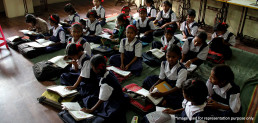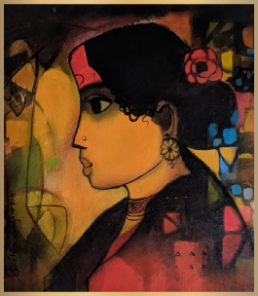Gender stereotypes shape societal norms and limit opportunities for individuals. Challenging these biases is essential for creating a more inclusive and equal society. Here’s how different sectors can contribute to combating gender stereotypes in India.
Understanding Gender Stereotypes: What Are They?
Gender stereotypes are preconceived notions about the roles, traits, and behaviours expected from men and women. These stereotypes often reinforce discrimination and restrict individuals from pursuing opportunities beyond traditional roles.
How Gender Stereotypes Impact Individuals and Society
Here are some ways gender stereotypes impact individuals and society:
- Limited career opportunities: Women are often discouraged from STEM fields, while men face stigma in caregiving roles.
- Workplace discrimination: Gender pay gaps and biases in hiring persist in many industries.
- Social conditioning: Cultural norms reinforce traditional expectations, affecting personal choices and aspirations.
Also Read: The Importance of STEM Education
Why Addressing Gender Stereotypes is Essential for Progress
Breaking gender stereotypes leads to:
- Economic growth: A diverse workforce enhances productivity and innovation.
- Better education outcomes: Encouraging all genders to explore various fields promotes balanced development.
- Improved societal well-being: Gender equality fosters healthier relationships and reduces discrimination.
Breaking the Cycle: How Education Can Eradicate Gender Stereotypes
Education plays a powerful role in shaping perceptions and dismantling gender stereotypes from an early age. Schools, colleges, and teachers can actively work toward creating an inclusive learning environment. Here’s how:
- Introducing gender-neutral curricula and diverse role models to challenge biases.
- Encouraging critical thinking so students question societal norms.
- Training teachers to recognise and address gender-based discrimination in classrooms.
Also Read: What is Gender Inequality
Role of Parents and Families in Combating Gender Stereotypes
Parents have the responsibility to nurture an environment that allows children to explore their interests freely without being bound by stereotypes. Some other ways are:
- Encouraging children to pursue interests beyond gender norms and develop diverse skills.
- Sharing household responsibilities equally sets an example of gender balance.
- Avoiding gender-biased language and reinforcing respect for all professions.
Media’s Influence on Gender Norms and Ways to Create Change
The media has a significant influence on shaping societal perceptions of gender. From advertisements to films, the way gender is represented affects how people perceive their roles in society. Changing these narratives can help in combating gender stereotypes effectively.
Empowering Women and Men to Challenge Stereotypical Roles
Women are often expected to take on caregiving roles, while men are pressured to be sole providers. Challenging these norms is essential for creating a more balanced society. Here’s how you can do this:
- Encouraging individuals to pursue careers and interests beyond traditional expectations.
- Promoting gender-inclusive policies at workplaces and educational institutions.
- Creating platforms for open discussions on gender equality and breaking biases.
Advocating for Equal Opportunities in Workplaces and Schools
Workplaces and educational institutions play an important role in shaping gender perceptions. Ensuring equal opportunities allows individuals to excel based on merit rather than outdated societal norms. To do this:
- Implementing unbiased hiring and promotion policies to close gender gaps.
- Providing mentorship programs that support women and underrepresented groups in leadership roles.
- Encouraging schools to include gender sensitivity training in their curriculum.
Addressing Gender Stereotypes in Rural and Urban India
While rural areas often adhere to traditional roles due to cultural norms, urban spaces also face challenges like workplace biases and unequal household responsibilities. Addressing these disparities requires targeted efforts. Here’s how you can do this:
- Expanding education and vocational training programs for women in rural areas.
- Encouraging men to take an active role in household responsibilities.
- Promoting awareness campaigns that challenge gender biases in both settings.
The Role of Cry America in Combating Gender Norms
Organisations like CRY America play a significant role in advocating for gender equality. Through their initiatives, they support children’s education, empower women, and challenge deep-rooted societal biases. Their efforts include:
- Running programs that provide girls with access to quality education.
- Working with communities to change perceptions around gender roles.
- Supporting policies that promote gender equality at the grassroots level.
How to Create a Supportive Environment for Future Generations
To ensure a future free from gender stereotypes, we must create an environment where children grow up with the freedom to choose their paths without societal restrictions. This involves collective efforts from families, educators, and policymakers.
FAQs
How can education help in combating gender stereotypes?
Education plays a key role in combating gender stereotypes by promoting gender equality from an early age. Schools can introduce gender-neutral curricula, highlight contributions from all genders in various fields, and encourage students to challenge biases. Training teachers to address stereotypes in classrooms also helps create an inclusive environment.
What role do parents play in breaking gender stereotypes?
Parents are the first influencers in a child’s life and play a crucial role in how to combat gender stereotypes at home. Encouraging children to explore interests beyond traditional gender roles, sharing household responsibilities equally, and avoiding gender-biased language help in shaping progressive mindsets.
How can the media contribute to reducing gender stereotypes in India?
The media has the power to reshape societal norms by portraying diverse and balanced gender roles. Promoting positive and realistic representations of women and men in films, advertisements, and news stories helps combat gender stereotypes. Media campaigns that challenge traditional norms and highlight gender equality can further accelerate change.
What are some examples of policies in India that address gender stereotypes?
Several Indian policies focus on combating gender stereotypes:
- Beti Bachao Beti Padhao – Encourages education and empowerment of girls.
- POSH Act (2013) – Addresses workplace harassment and promotes gender equality at work.
- Gender Budgeting – Ensures government policies consider gender perspectives.
- These initiatives work towards dismantling deep-rooted biases in society.
Are gender stereotypes more prevalent in rural or urban India?
Gender stereotypes exist in both rural and urban areas, though they manifest differently. Rural regions often see stronger traditional roles due to cultural norms and limited education. Urban India, while more progressive, still faces biases in workplaces, media, and societal expectations. Addressing stereotypes in both settings requires targeted efforts in education, policy-making, and media representation.
Recommended for you



















































